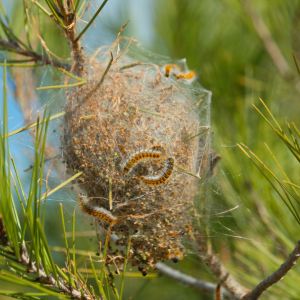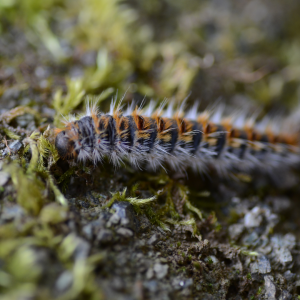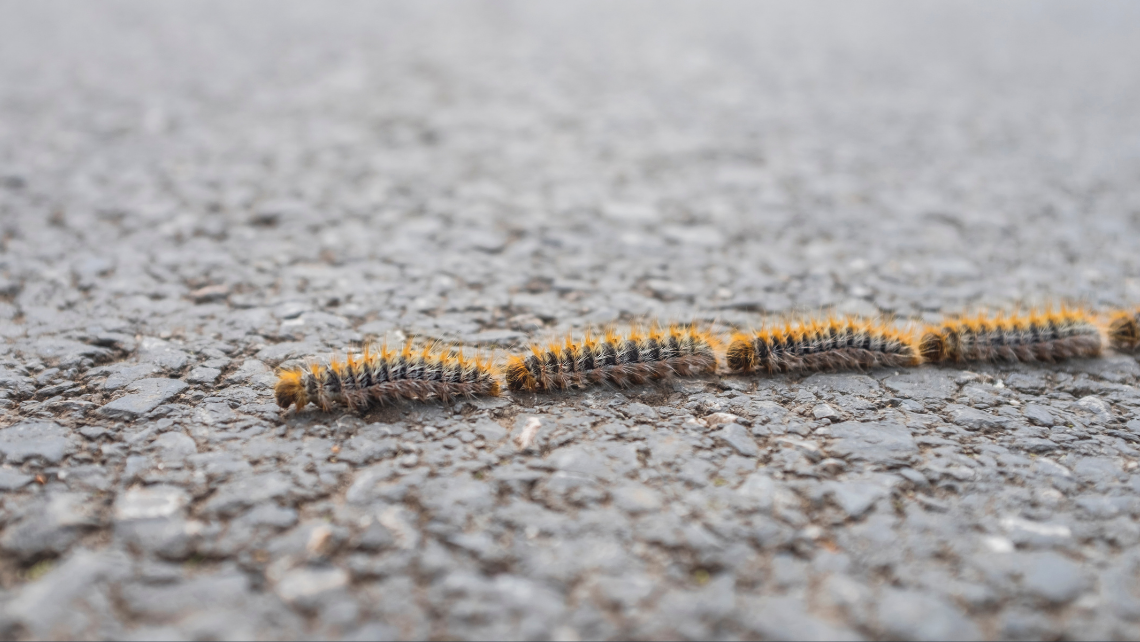Every year, between February and May, we are surrounded by warnings and alerts about the pine caterpillar, and the risk of its contact with humans and pets.
However, for those who have adopted a pet for the first time, dog or cat, it is possible that this information has passed unnoticed, or they just don´t know how to recognize these pests.
But what is so special about these caterpillars? And how can they pose such a danger to us and our pets?
We’ll tell you all about it!
Pine Caterpillar or Processionary Caterpillar?
In fact, both names for Thaumetophoea pityocampa, the scientific name for this insect, are correct.
The first, because it is a pest that infests mainly pine trees, but can also be found in cedars. The second, because these caterpillars move slowly one after the other, in a single line, as if they are following a procession.
What is the most risky time of year?
The life cycle of these moths, which lasts about one year, has two phases: an aerial one, in the trees, and a terrestrial one, on the ground.

Between February and May, when they leave their definitive nests in the treetops (that look like silk balls), and start to descend towards the ground in a collective migration, the risk of contact is higher.
However, depending on the weather conditions, it is possible to find caterpillars on the ground as early as January, or even December. This happens because climate influences their development, and can speed up or slow down the process, depending on temperature and humidity levels.
Why are they a danger?
The processionary caterpillar’s body surface is covered with thousands of stinging hairs, their defense against natural predators. These hairs contain a toxic protein, thaumetopoein.
This toxin is responsible for allergic reactions in humans and animals, either through inhalation of the hairs scattered in the environment or deposited on surfaces, or through direct contact with the skin and mucous membranes.

In the case of humans, children end up being the most vulnerable, due to their natural curiosity, which leads them to touch the caterpillars and then rub their eyes or mouth. The appearance of the processionary caterpillars, with their apparent cuteness and very attractive colors, contributes to their allure.
With our pets, although cats can may also be affected, we see mostly dogs being attracted to these catterpillars. By being curious and with a more exploratory and playful behavior, dogs tend to find this moving line of hairy caterpillars most appealing. Therefore, dogs may try to sniff, lick, eat or step on the processionary caterpillars. All of these behaviors with terrible consequences, as the caterpillars will certainly feel attacked and proceed to free an enormous amount of their tiny sting hairs that will grip onto our pets.
What are the warning signs to watch out for in our pets?
They are variable and tend to progress over time, depending on the animal and the type and amount of exposure:
- Hypersalivation,
- Intense itching,
- Swelling of the lips and eyelids (some cases, which include lesions on the conjunctiva and cornea, can lead to total loss of vision),
- Lesions on the tongue and difficulty in eating (necrosis of the tissues can be rapid and exuberant, even leading tissue loss, which can make it impossible for the pet to eat or drink),
- Vomiting and/or diarrhea,
- Apathy.
The most severe situations can rapidly evolve to respiratory difficulties and suffocation and may even develop into anaphylactic shock with muscle tremors, coma and death.
What can we do in case of contact or suspected contact?
The best recommendation is this one – never wait!
If possible, we should put on gloves, to protect us from the irritating hairs, and wash the affected area thoroughly with water.
Since there is no specific antidote for the caterpillar toxin, the sooner the treatment, the better the prognosis. Therefore, in case of contact or even just suspicion, we should take our pet immediately to the veterinarian.
Is there any way we can prevent it?
In areas of higher risk (with lots of pine trees), it is common to use mechanical methods of pest control (bands around the trees to collect the wandering caterpillars) to reduce the numbers of these processionary caterpillars and control their spread.
However, in the absence of these methods, it is up to us, as pet parents, to prevent contact with the processionary caterpillar. So, be sure to avoid walks in pine forests, gardens or woods where there are pine or cedar trees as soon as you see the silky nests in the pine trees. And if our pets have free access outdoors, in high risk places, keep an eye out for any signs of alarm from your pet.
If we see any nest or a caterpillar procession, either on the street nearby, in the park we usually go to, or in our own garden, we should keep our distance and prevent children or pets from getting close. Also, you may contact your municipality offices, and inform them of any sightings. If they are on our property, many certified pest control companies will treat the affected trees so that you and your pets can remain safe.
Outdoor walks and activities are important not only for our own well-being, but for our pets, and should not be disregarded at all! Now that we know what to look out for, we can continue to make the most of outdoor experiences at a time when the days are longer and the weather becomes more inviting.
Save this and other alerts about your pet’s health and safety in the Petable app:

Leave a Comment